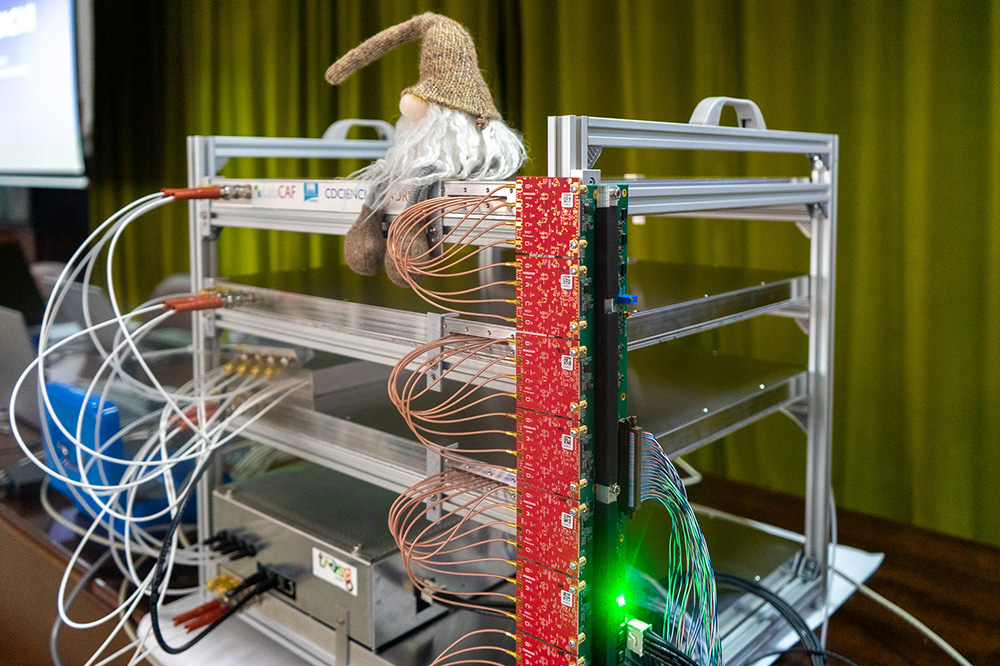The team of the Trasgo project, focused on the development of cosmic ray detectors, held a workshop on Tuesday, June 27, in which the current state of this international collaboration was addressed, in which research staff from the Galician Institute of High Energy Physics (IGFAE) participates. The meeting, which was held at the Faculty of Physics of the USC, was also the scene of the practical demonstration of the new generation of the miniTrasgo detector.
A few years ago, the LabCAF group, coordinated by IGFAE researcher Juan A. Garzón Heydt, began to develop a new generation of detectors, called Trasgos, for the permanent study of cosmic rays using devices installed on the ground.
Unlike existing techniques, based mainly on the measurement of neutrons and muons, these devices offer, among other features, a high granularity that allows the simultaneous measurement of many particles, the ability to separate muons and electrons using software techniques and an estimate of the electromagnetic energy deposited in the detector.
So far, four Trasgos have been built, dedicated to different areas of research, such as the study of solar activity, the muography of containers and various geomagnetic and atmospheric studies. The new generation of detectors, presented at the meeting in Santiago by Juan A. Garzón and Alberto Blanco, researcher at the Laboratório de Instrumentação e Física Experimental de Partículas (LIP) of the University of Coimbra, Portugal, represents a new step in the development of this type of devices, smaller, affordable and with some of their improved performance.
In the aforementioned meeting participated, in person or telematically, researchers from institutions in Spain, Portugal, Colombia, Mexico, Poland and Switzerland, who are contributing with their work to the development of the Traits and the future deployment of several of these detectors in different universities around the world for network operation.

